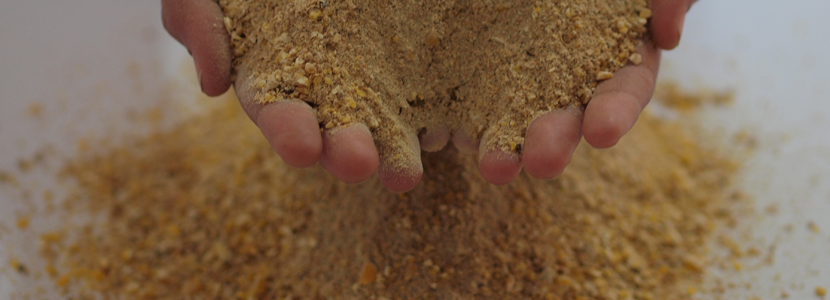Content available at: Español (Spanish)
When considering the comprehensive process of formulating, producing and delivering a feed to satisfy the nutritional requirements of the birds, three different types of feed are generated:
This means that we can never be totally certain of the nutrients that the birds are actually consuming.
The most appropriate way to ensure that what the bird is eating approaches the formulation that we have designed for it, is by knowing very well the raw materials that are being purchased; having good management of the storage of said ingredients; proper manufacturing and efficient feeding process.
The purchase of raw materials and especially of additives must be carried out under permanent technical supervision that correctly guides the purchasing personnel.
QUALITY AND AVAILABILITY OF RAW MATERIALS
Due to the scarcity and high cost of raw materials in recent years, it is more common to find batches of lower quality due to dilution of their nutritional composition as a result of excess moisture or adulteration, often resulting in fungal contamination that can lead to mycotoxicosis.
SOY
There are still problems with batches of poorly processed soybean meal that generate serious performance problems such as wet litter and deterioration of the foot pads of birds when heat treating is not done properly.
Due to the enormous increase in the current chicken feed consumption, it has been observed that the presence of relatively low levels of trypsin inhibitors in the diet is capable of causing rapid ingesta transit problems or a decrease in feed digestibility. This scenario suggests that levels greater than 0.1 mg of urease activity or 3 mg of trypsin inhibitors per gram of soy affect performance in chicks. In the case of overheating soybeans, which is less common, the situation is not so serious and can be counteracted by adding an extra amount of lysine or lysine/methionine mixture to the ration.
The quality of the ingredients will never improve over time; therefore, it’s critical to minimize their deterioration during storage.
- The proliferation of fungi and the consequent contamination with mycotoxins are the main problems here.
- The most critical factors that exacerbate it are humidity, pest infestation by insects and / or rodents that destroy the integrity of the grain and increase the amount of fine particles and of course, the total storage time.
- Several additives, especially vitamins and enzymes, require additional care during storage when it comes to temperature and always bear in mind that, just like medicine, they have an expiration date.
FORMULATION
For an adequate formulation, it is essential to know the desired product or the final products for sale, the normal challenges faced by the bird’s selective nature in order to correctly decide the prophylactic additives to be used in the ration and to have the best estimate of the birds’ nutritional requirements in each productive stage.
Incredible as it may seem, we only know about 30% of the birds’ needs; so for most nutrients it is simply best to estimate the ideal conditions.
PROTEIN
The digestibility of the main protein ingredients used in poultry feed is around 85%; However, the use of amino acids to form body protein is often less efficient due to amino acid imbalances from excess protein.
Mycotoxin contamination is the main problem during the storage of feed ingredients
Excess levels of protein in the ration not only implies additional cost of the formula, but can also affect the productive performance of the birds. This negative effect is particularly noticeable in birds that are under heat stress conditions. Birds do not have a crude protein requirement as such; they only need an amount that ensures a sufficient nitrogen reserve for the synthesis of non-essential amino acids.
However, due to the limited knowledge that still exists about the exact requirements of essential amino acids and their interrelationships, it has not been possible to clearly establish the minimum reliable limit of protein.
Keep up to date with our newsletters
Receive the magazine for free in digital version
REGISTRATION
ACCESS
YOUR ACCOUNT
LOGIN
Lost your password?

